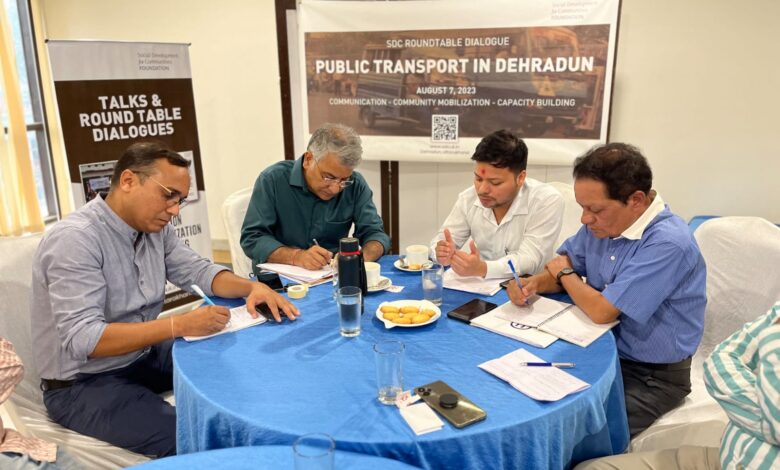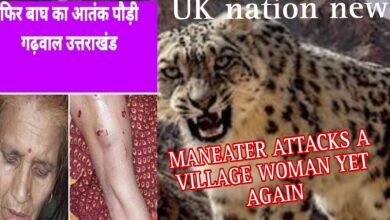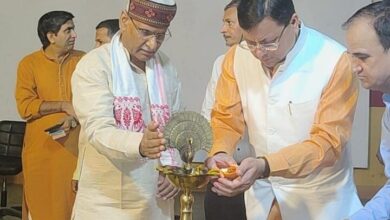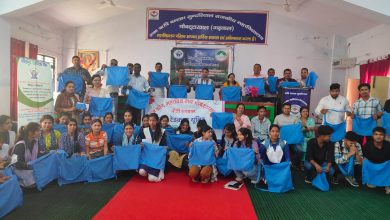Ideas and suggestions presented during the “Public Transport in Dehradun”Roundtable Dialogue of SDC Foundation, involving diverse government and societal stakeholders
Comprehensive Improvements Needed in Dehradun's Public Transportation,Depletion of road capacity in Dehradun, urgent need for immediate planning,Necessity for solutions such as metro rail and multi-modal transport

Dehradun
Considering the escalating population, traffic congestion, and proliferation of private vehicles, there is a critical need for significant enhancements in Dehradun’s public transportation system.
Achieving this task hinges upon political determination, hence raising public awareness regarding urban transport issues is imperative.
The “Public Transport in Dehradun” Roundtable Dialogue organized by SDC Foundation brought forth numerous ideas and recommendations.
Anoop Nautiyal, the Founder of the SDC Foundation emphasized that since the state’s inception, Dehradun’s population has grown manifold.
By 2041, the city’s population is projected to reach 2.5 million. Over the years, discussions encompassing various alternatives, from metro systems to neo metro to pod taxis have taken place.
However, the absence of tangible initiatives has shrouded people’s confidence. Meanwhile, Dehradun struggles with traffic issues and the lack of both focus and accountability in developing dedicated public urban transport in the city has compounded the problem.

Participating in the discussion, Shailesh Tiwari, RTO (Enforcement), highlighted ongoing efforts to enhance Dehradun’s current public transport system.
With a population of around 1.2 million, there are nearly 1 million vehicles present. The city boasts an extensive transport network including approximately 170 city buses, 30 electric buses, 500 Tata Magic vehicles, 800 Vikram vehicles, 2500 autos, and 4500 e-rickshaws.
Plans are being developed for circular routes, such as Kuthalgate-Clement Town, Raipur-Jhajhra and Ballupur-Kuwanwala, for the future.
Steps are also being taken to reduce the movement on key roads of e-rickshaws. The city requires approximately 350 buses with around 30 seats each for public transport. Until the metro arrives, the existing system needs to be improved.

Arun Kumar Bhatt, DGM (Civil) of Uttarakhand Metro, mentioned the Comprehensive Mobility Plan prepared for Dehradun in 2019, serving as a roadmap for improving the city’s transport system.
Most major roads in Dehradun have reached their saturation point, necessitating exploration of new options.
The neo metro system could be a significant solution for Dehradun. Currently, the project is under consideration by the central government. Plans for pod taxis are also being developed as a feeder for the neo metro project in the second phase.
Gopal Sharma, PRO of Uttarakhand Metro, shared insights from experiences with large rail projects like the metro. He emphasized the role of political will in such projects, making the participation of representatives crucial. Given that most of Dehradun’s roads are only up to 12 meters wide, skywalks or underground transport systems need to be developed. In addition to catering to the city’s 1.2 million population, the needs of visitors and future growth must also be considered. Ensuring women’s safety is paramount for metro systems.
Environmental expert Dr. Soumya Prasad highlighted issues of inadequate public transport and high fares for the general public in Dehradun. Alongside addressing arbitrary practices in auto and e-rickshaw services, she underscored the importance of developing reliable public transport with bus shelters and promoting E-vehicles. Dr. Prasad also suggested understanding transportation needs and patterns of people through technology and data.
Senior journalist Ajeet Singh noted that despite having several legislative constituencies, public transport did not become a significant electoral issue in Dehradun, despite limited road space. Over-dependence on private vehicles is evident. Without political will for urban transport, the state of public transport will remain unchanged.
Devendra Pal Singh Monty, President of the Doon Residents Welfare Association and a municipal councillor, stressed the need for better transport facilities. However, a lack of clear political desire is evident. Coordination between departments is lacking, and there is uncertainty about officials’ responsibilities. Ensuring public participation is crucial for improving the city’s traffic and transport system.
Concluding the program, senior journalist Sanjeev Kandwal emphasized that when it comes to public transport, the key focus of the government is majorly on roadways alone, whereas the greater need to look holistically at the issue of urban transport. He highlighted the need to connect the increasing urban population, encroachments, and public perspectives in Dehradun’s urban transport planning.






